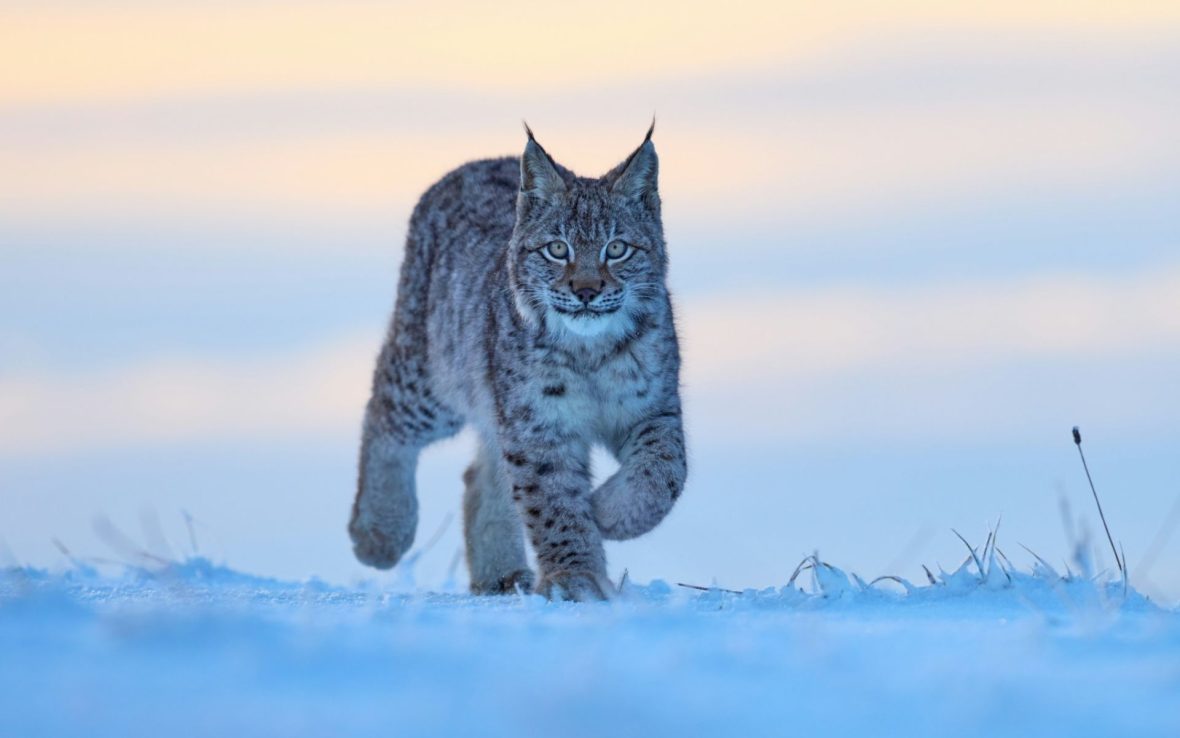
The UK has been devoid of apex predators for hundreds of years. Now, there’s a proposal to bring the lynx back to northeast England to help the forests heal.


The UK has been devoid of apex predators for hundreds of years. Now, there’s a proposal to bring the lynx back to northeast England to help the forests heal.
If you go hiking in the United Kingdom, the largest, scariest animal you might encounter is a cow. It’s been hundreds of years since there’s been a predator here big enough to take down a deer, and as a result, the deer have been eating the forests to death.
That’s a big problem in both England and Scotland, but there’s hope that one small animal could help bring the deer population back into balance. Last week, the Lynx UK Trust announced that it would be submitting a proposal to reintroduce the cats to northeast England, where they’ve been absent for over a thousand years since they were hunted to extinction for their fur.
“The fact that the UK is one of the only countries in the world without an apex predator should be a source of huge shame for the government,” Paul O’Donoghue, head of Lynx UK, told The Guardian. “We are in a biodiversity crisis. It is time for the greenwashing and needless conversations to stop and for real actions to occur.”

Advocates claim that the cats don’t pose a threat to humans, and could foster new forest growth by getting deer under control. Lynx UK also estimates they could bring up to GBP£8.5 million (USD$11.5 million) in annual tourist revenue from wildlife enthusiasts.
But there’s a lot of controversy, too. The British countryside is full of grazing sheep, and many farmers fear that the lynx will come after their livelihood.
“A carefully managed lynx reintroduction would make Scotland’s natural world richer and stronger, providing wider benefits for biodiversity, climate resilience and economic prosperity.”
- Steve Micklewright, chief executive, Trees for Life
Bringing back predators with big teeth has been divisive in the US too. In 2020, Colorado voters were asked to decide whether to reintroduce gray wolves to the state, and the measure passed by a narrow margin. The first gray wolves were released in December 2023, and are extremely unpopular with ranchers concerned about their livestock. A group called the Colorado Advocates for Smart Wolf Policy is working to get wolves back on the ballot next year, to officially halt the program.
However, there is strong research to suggest that apex predators can aid revegetation. Scientists who studied the impact on Yellowstone National Park after wolves were reintroduced in the 1990s found significant growth and recovery of riverside willows and shrubs in the following decades, thanks to a reduced elk population.
Reintroducing wolves to the Scottish Highlands could result in enough forest regeneration to capture one million metric tons of carbon dioxide each year, according to a study published in February by the University of Leeds.
As of right now, it’s not possible to legally reintroduce the lynx to England due to existing laws that categorize the cats as dangerous. But O’Donoghue says he thinks that law could be easily tweaked. The lynx has been successfully reintroduced in many other European countries, his organization says, including Germany, Switzerland, and Slovenia. In the Harz mountain region of Germany alone, Lynx UK says they’re estimated to bring up to GBP£13 million (USD$17.6 million) in tourist revenue each year.

North of the English border, a parallel organization called Lynx to Scotland says there’s broad support for proposals to bring the predators back to the Highlands. The issue was brought back into the spotlight earlier this year when a couple of lynxes were illegally released in the Cairngorms, which the organization condemned. A survey conducted on their behalf found that over 60 percent of Scots over the age of 16 support the prospect of reintroduction.
“This poll shows that growing numbers of Scots want to see lynx reintroduced and understand that the benefits of their return outweigh any problems they might cause,” Steve Micklewright, chief executive of Trees for Life, one of the charities involved, said in a statement at the time. “A carefully managed lynx reintroduction would make Scotland’s natural world richer and stronger, providing wider benefits for biodiversity, climate resilience and economic prosperity.”
On the other side of the pond, some even bigger teeth could be on the docket soon: California is reportedly considering bringing back the grizzly that adorns its state flag. Most people say they support the idea of grizzly recovery, according to The Guardian.
Whether they’ll want them in their own backyards? That remains to be seen.
***
Adventure.com strives to be a low-emissions travel publication. We are powered by, but editorially independent of, Intrepid Travel, the world’s largest travel B Corp, who help ensure Adventure.com maintains high standards of sustainability in our work and activities. You can visit our sustainability page or read our Contributor Impact Guidelines for more information.

Kassondra Cloos is a travel journalist from Rhode Island living in London, and Adventure.com's news and gear writer. Her work focuses on slow travel, urban outdoor spaces and human-powered adventure. She has written about kayaking across Scotland, dog sledding in Sweden and road tripping around Mexico. Her latest work appears in The Guardian, Backpacker and Outside, and she is currently section-hiking the 2,795-mile England Coast Path.








Can't find what you're looking for? Try using these tags: